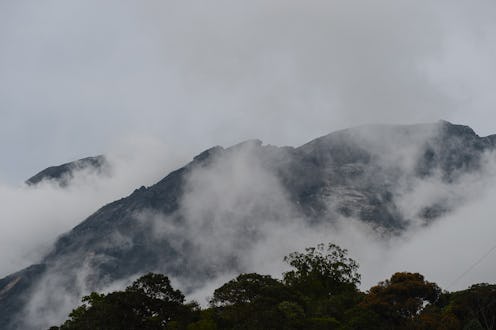News
Magnitude 6.0 Quake Strikes Malaysia, Killing 11
It's been just weeks since a deadly earthquake measuring nearly 8.0 on the Richter scale struck the Nepalese capital of Kathmandu, and exactly one week since a second quake in Japan rattled homes and city structures in downtown Tokyo. On Saturday, a third deadly quake shook Mount Kinabalu in Malaysia, killing 11 climbers. The quake, which registered at a magnitude 6.0 and was centered on nearby Borneo Island in northwest Sabah state, also left some 160 additional climbers stranded on the summit in dangerous conditions for hours.
"I have just announced the recovery of 9 (additional) bodies by rescue teams," tweeted Malaysian tourism minister Masidi Manjun on Saturday, as recovery efforts to help climbers down the mountainside began ramping up. "Trying to get heli[copters] to bring them down." He added that the latest fatalities had brought the death toll to 11.
The quake was apparently powerful enough to reshape the mountain itself, snapping the iconic twin peaks, referred to as the "donkey ears," from their place and altering the skyline.
Hours after the quake first struck, eight climbers were still reported missing, the majority of whom were students and teachers from a Singaporean primary school, said the country's Minister of Education, Heng Swee Keat, in a statement. Manjun added that forensic police experts had been called in to investigate as well.
As climbers recounted waiting in the frigid temperatures on the summit, rescue helicopters struggled to reach them through bleak weather conditions, finally giving up and being forced to wait out the storm. A group of rescue climbers was eventually able to meet the stranded survivors and assist them in the descent.
The climbers added that while boxes of supplies and rations had been dropped to them while they awaited rescue, the boxes dropped off into a gorge and became lost, pushing the already exhausted and dehydrated survivors to their limit. According to authorities, the majority of the climbers arrived at relief stations in moderate condition, with one suffering a broken limb and another in a coma.
"The main rescue work was done by the mountain guides," tour agency spokeswoman Lynn Siang told CNN on Saturday, recounting the massive efforts by the climbing experts who answered the call when helicopters could not reach those stranded. "On the path that was blocked by fallen rocks, the mountain guides had to tie a rope, [and] when climbers crossed the ropes, they had to step on the shoulders of the guides — the guides used their body as a cushion."
Siang called the guides "heroes."
According to RT, the region rarely experiences such dramatic quakes, as it lies outside of the Pacific Ring of Fire, a tectonic region prone to varying seismic activity. Saturday's quake was therefore considered an anomaly. Some in the local religious community have blamed the quake on spiritual disturbance caused by a group of Westerners who had hiked the mountain just days earlier and snapped nude photographs of themselves at the summit.
